Optical technologies are one of the most important future-oriented industry of the 21st century, contributing significantly to technological progress. They facilitate innovative infrastructures, which are indispensable for further digitalization of industry, science, and society.
Mathematical modeling, numerical simulation, as well as theoretical understanding of the occuring effects are important contributions of WIAS to today's technological challenges. A central topic is the modeling and mathematical analysis of the governing equations and the simulation of semiconductor devices.
Core areas are:
- organic semiconductors (e.g. organic light-emitting diodes)
- applications of laser technologies and problems of nonlinear fiber optics
- mathematical optimization of opto-electronic devices (silicon photonics)
- quantum-mechanical modeling of nano-structures and their consistent coupling to macroscopic models
- hybrid modeling of semiconductor devices and "bulk-interface" processes
- efficient algorithms in diffractive optics for the simulation of scattering on novel nano-structured surfaces
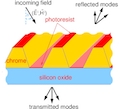
Applications in diffractive optics
Diffractive optical elements employ the controlled use of light propagation on microstructered interfaces. They perform functions unattainable with traditional elements and can be applied in diffractive measurement technique, spectroscopy, astronomy, optical communication techniques, and information processing. For the design of such elements, Maxwell`s equations have to be solved and special optimization algorithms are to be adapted.
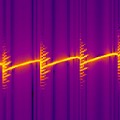
Dynamics of semiconductor lasers
Semiconductor lasers are compact, efficient and reliable light sources playing a crucial role in many modern technological systems. Depending on parameters and on their geometry, laser devices demonstrate a variety of complex dynamical regimes. A comprehensive study of the underlying nonlinear processes and bifurcation analysis leads to a better understanding of the observed behavior. This knowledge supports the design of new types of laser devices for specific purposes.
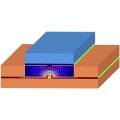
Modeling and simulation of semiconductor structures
Modern semiconductor and optoelectronic devices such as semiconductor lasers or organic field-effect transistors are based on semiconductor structures, which e.g. can be given by doping profiles, heterostructures or nanostructures. For the qualitative and quantitative understanding of the properties of these devices, mathematical modeling and simulation of the most relevant and, respectively, of the limiting carrier transport processes is necessary. In the context of the Green Photonics Initiative new topics move into the focus of research, e.g. reduced energy consumption of devices, new applications in the field of renewable energies, communication and lighting.
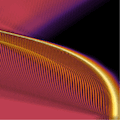
Optical pulses in nonlinear media
This application deals with extreme nonlinear optics, and in particular with the propagation of intense ultrashort pulses in optical fibers. The propagation and stability of these pulses are studied by novel numerically effective models, which correctly account for both nonlocal response effects and basic physical constraints. For the latter, it is important to keep the causality principle, leading to the intrinsic Kramers-Kronig relation between dispersion and dissipation. In addition, the correct behavior of the medium response for large frequencies should be reproduced by the model. Furthermore, propagation equations are used to investigate long-living solitary solutions and mutual interactions of extreme few-cycle optical pulses.
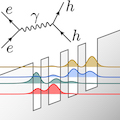
Quantum models for semiconductors
The relatively large dimensions of semiconductor devices and the complexity of quantum-mechanical models require the consistent modeling of classical and quantum-mechanical descriptions via hybrid models, e.g. by coupling drift-diffusion models to quantum master equations of Lindblad type to describe embedded open quantum systems. Such hybrid models permit the modeling of complex devices such as quantum-dot lasers or single-photon emitters.
Main Areas of Application
Contact
Contributing groups
- Partial Differential Equations
- Laser Dynamics
- Numerical Mathematics and Scientific Computing
- Nonlinear Optimization and Inverse Problems
- Nonsmooth Variational Problems and Operator Equations
- Numerical Methods for Innovative Semiconductor Devices
- Modeling, Analysis, and Scaling Limits for Bulk-Interface Processes


